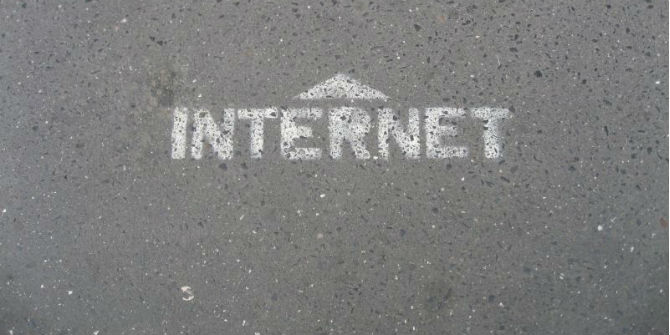 Professor Natali Helberger is professor of Information Law at the University of Amsterdam’s (UvA), Institute for Information Law (IViR). Here she highlights the need for the plurality debate to focus on user demand and consumption, in particular defining just what a sufficiently diverse news diet is, and to what ends this is being pursued.
Professor Natali Helberger is professor of Information Law at the University of Amsterdam’s (UvA), Institute for Information Law (IViR). Here she highlights the need for the plurality debate to focus on user demand and consumption, in particular defining just what a sufficiently diverse news diet is, and to what ends this is being pursued.
If the ongoing debate about media plurality and digital intermediaries has demonstrated one thing, it is that diversity of supply (still the dominant target of media pluralism policies) does not automatically translate into diverse exposure. The information that users ultimately read, watch and listen to is increasingly the result of a selective social, commercial or personal filtering process by search engines, social networks, app stores, but also professional media and users themselves. A plurality dialogue, accordingly, should also take the user perspective and matters of exposure diversity on board.
The user dimension of diversity policies – a sensitive matter
Some may think the user is already taken into account. However, if this is the case, we should be able to answer a relatively straightforward question: what is sufficiently diverse exposure to media content? This is a central question for measuring, benchmarking and developing adequate policy responses. Of course personalisation and filtering strategies do affect the choices that are ultimately presented to users – but when should we be concerned about this? Or on the contrary, is this a positive development as some studies show they can have a positive effect on the variety of content users are exposed to?
Matters of exposure diversity have always been a sensitive matter in law and policy, which might explain why media policy has avoided them for so long. The inclusion of the notion of ‘consumption’ in Ofcom’s definition of media pluralism was followed with suspicion and raised the question, as the UK Select Committee on Communications reported, “about whether Ofcom’s intention has been to suggest that plurality policies should actively stimulate the demand for and consumption of diverse viewpoints.”
Stimulating demand for and consumption of diverse viewpoints – a taboo for media law and policy?
If this were the case, would it be a bad thing? After all, the whole objective of many of these new intermediaries is to influence individual choices. The traditional media are exploring similar opportunities from algorithmic profiling and innovative ways of selling content to users. The New York Times offered a very open account of this in this year’s Innovation Report (for some of the normative implications, see my inaugural speech). Even media law and policy has a tradition of influencing users’ media choices. Take the provision (Art. 6 (4)) that entitles members to stipulate that ‘general interest content’ should be presented prominently on navigational devices so that users are more likely to be exposed to such content. The European Commission has questioned if this provision should be extended to search engines. To give another example, media literacy policies are, amongst other objectives, about educating users how to use the media and make diverse choices. And isn’t the task of public service media to stimulate the demand for and consumption of diverse viewpoints?
Incorporating the exposure dimension into the plurality dialogue
In other words, a significant part, if not the core, of the debate about intermediaries and plurality is about influencing demand. Of course this doesn’t mean punishing users if their news diets are not sufficiently diverse. Or telling them what to watch and read. However I would argue that there is a role for governments to abolish threats to and help realise opportunities for diverse exposure –the plurality dialogue should help to define what that role could be.
One example could be critically analysing what Ryan Calo has called digital market manipulation – using data about individual users to manipulate their choices. It is unclear to what extent Unfair Commercial Practice regulation would offer media users protection from socially unacceptable forms of commercial manipulation. Media law and policy could help define the scope here. Another interesting option would be diversity by design: alternative search and recommendations systems presenting not just the most popular or personalized content, but an aggregate of different perspectives (MIT MediaMeter). Or, by acknowledging that presenting diverse content is ultimately an editorial choice and not about ‘neutrality’, which is one of the reasons why extending Art. 6 (4) of the Access Directive to search engines is not a good idea at all.
But what is sufficiently diverse media exposure?
One task of the plurality dialogue should be to get closer to the answer of what sufficiently diverse exposure should look like. If I may venture a suggestion: the answer is unlikely to be the one the UK government has advanced as a possible part of a future ‘narrative description of the degree of sufficiency of plurality’: the aspect of ‘high overall reach and consumption with consumers actively multi-sourcing’. Put differently, this suggests that as long as users still consume (a lot of) media content, and do so from different sources, we are fine.
I tend to disagree. In a time of information overload, quality not quantity of exposure matters. Sufficiently diverse exposure is not about high levels of consumption from different sources, but about the right mix. At this point, it would be unacceptable to become too prescriptive: we cannot force-feed user’s media diets. But who says we should? It would help if we are able to clarify the objectives of what we hope to achieve with media plurality. Once we have defined this, it would be possible to develop a vision of what diverse exposure would look like.
It is always easier to discuss with something to agree or disagree about, which is why I suggest what those objectives could be. Looking at political theories about the role of the media (and informed users) in a democratic society, arguably there are at least 4 alternative (or complementary) functions diverse exposure needs to serve: helping the audience to discover the difference; exposing the audience to marginalised views; encouraging serendipitous encounters, and promoting intellectual self-development. Once we have defined these (and other) objectives we could take the next step and ask: how can exposing users to media content help contribute to the realisation of these goals, and what are possible threats to realising this?
Take the first objective: helping the audience to discover the difference. Search Engines or recommendation features could put this in practice by including elements of serendipity or enriching results with links to different viewpoints. On the other hand, if the ultimate goal of exposure diversity is to provide marginalised ideas and groups with an audience, they (and not general interest content) should be prioritised. These examples already show how different the outcome of any diversity measurement can be, depending on the conceptualisation of the benchmarks. In the end, the success of media pluralism policies will increasingly depend on our ability to conceptualise exposure diversity as a policy goal.
This article gives the views of the author, and does not represent the position of the LSE Media Policy Project blog, nor of the London School of Economics.




